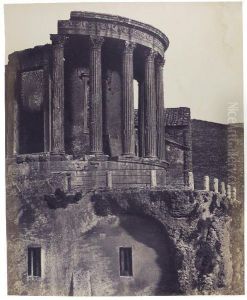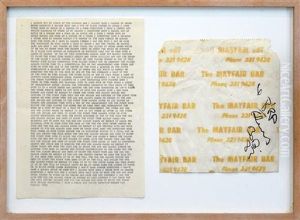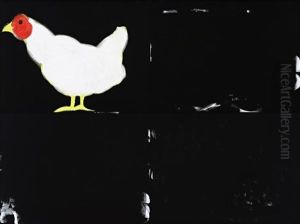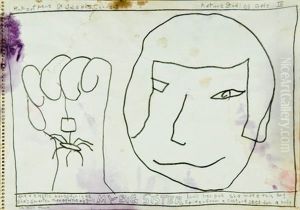Robert Macpherson Paintings
Robert Macpherson was a Scottish photographer known for his work in Italy, particularly in Rome, during the 19th century. Born in 1811 in Scotland, Macpherson initially embarked on a career in medicine before turning his attention to art and ultimately, photography. His transition to photography coincided with the medium's nascent stages, allowing him to explore and innovate within a relatively new field.
Macpherson moved to Rome in the 1840s, a period during which the city was a magnet for artists, writers, and intellectuals from across Europe. It was here that he established himself as a photographer, capturing the city's ancient ruins, sculptures, and architectural marvels. His photographs were not merely documentary; they were imbued with an artistic sensibility that elevated them to works of art. Macpherson's ability to manipulate light and shadow, combined with his meticulous compositions, resulted in images that conveyed the grandeur and decay of Rome's classical heritage.
One of Macpherson's significant contributions to photography was his extensive documentation of the Roman Forum and the Colosseum, as well as the numerous statues and bas-reliefs that adorned the city's churches and palaces. His work provided a visual record of Rome's archaeological and architectural treasures at a time when such imagery was scarce. Moreover, Macpherson's photographs served an educational purpose, offering scholars and the general public alike a detailed view of Roman art and architecture.
Macpherson's photography studio became a hub for tourists, scholars, and collectors who sought his prints as souvenirs or for scholarly study. His work was widely acclaimed, and he enjoyed the patronage of prominent figures of his time. Despite his success, Macpherson remained deeply interested in the technical aspects of photography, experimenting with different processes and techniques to improve the quality of his images.
Robert Macpherson passed away in 1872, leaving behind a legacy that would influence the fields of both photography and archaeology. His photographs continue to be celebrated for their artistic quality and historical importance, offering a glimpse into the past through the lens of one of the 19th century's pioneering photographers.











